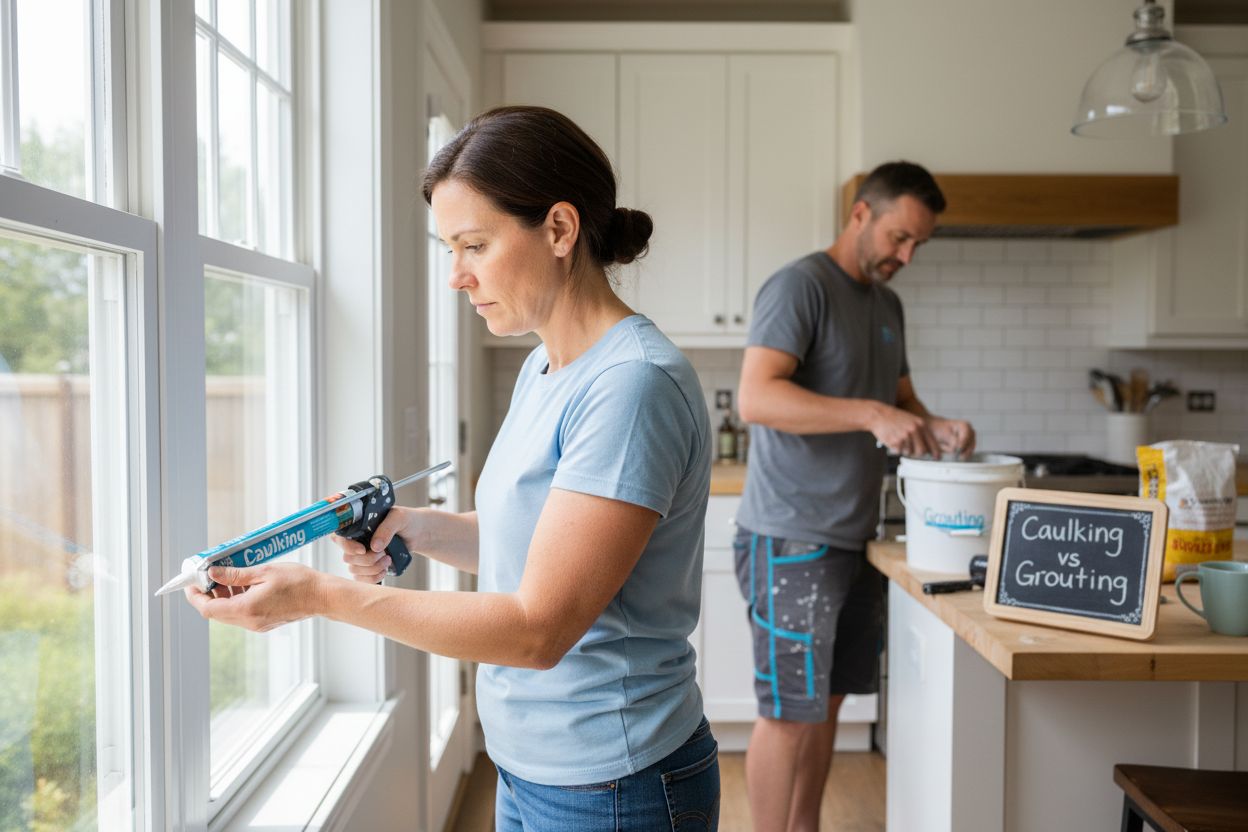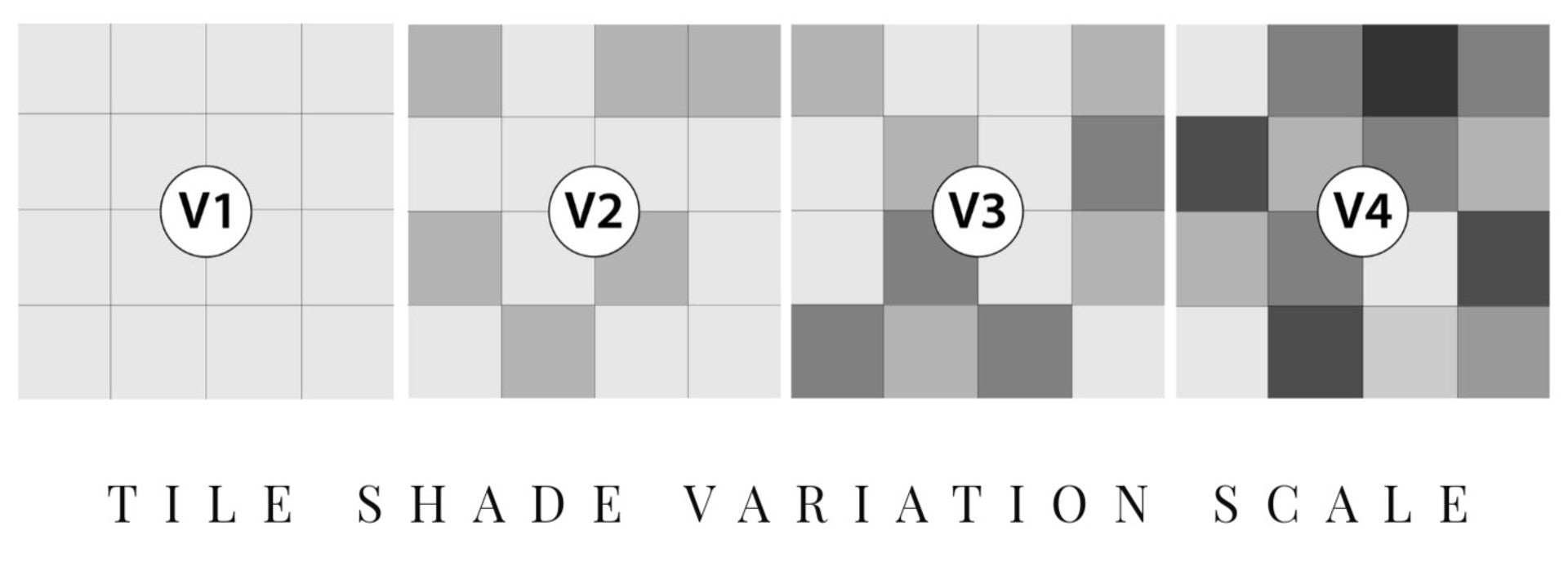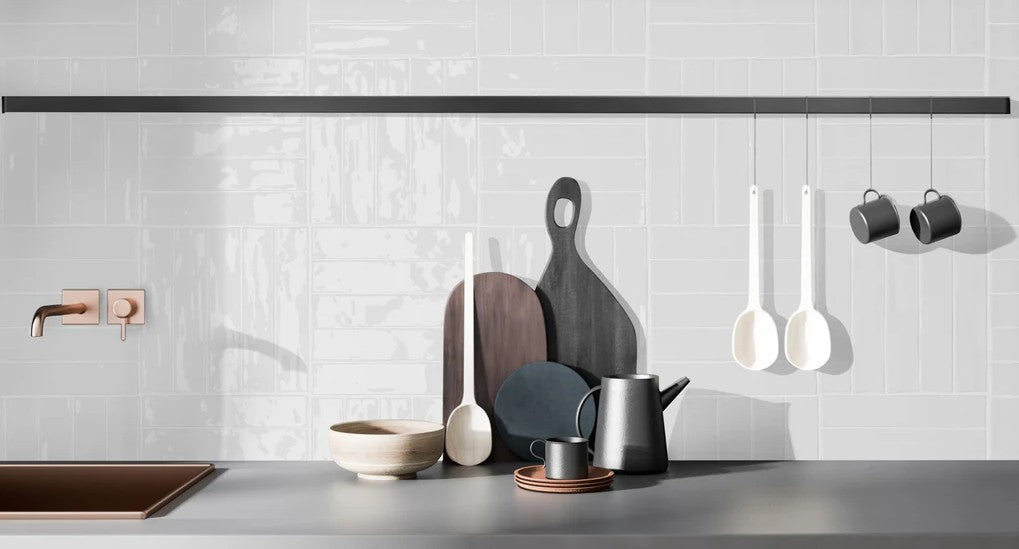Caulking and grouting might sound like minor steps in home improvement, but they play a much bigger role than most people think. For instance, proper caulking can improve a building’s energy efficiency by reducing air infiltration and minimizing heat loss. Most DIY guides just lump these techniques together, treating them as if they do the same job. In reality, each one has a unique purpose that could make or break your next renovation project.
Table of Contents
- What Are Caulking And Grouting?
- Why Are Caulking And Grouting Important?
- How Caulking Works: Properties And Applications
- How Grouting Works: Properties And Applications
- Key Differences Between Caulking And Grouting
Quick Summary
| Takeaway | Explanation |
|---|---|
| Caulking creates flexible, waterproof seals | It is used to seal gaps around windows and doors, preventing moisture and air infiltration. |
| Grouting fills gaps for tile stability | Grout provides structural support between tiles, ensuring a uniform and durable surface. |
| Proper application enhances longevity | Both techniques require careful application to prevent moisture damage and extend surface life. |
| Caulk is for movement; grout is rigid | Caulking accommodates expansion, while grouting offers solid stability in tile installations. |
| Both improve aesthetic appeal | Caulking and grouting create polished finishes that enhance the overall look of surfaces. |
What are Caulking and Grouting?
Caulking and grouting are two essential techniques used in construction, renovation, and home improvement projects, often confused due to their similar purposes of sealing and filling spaces. While they might seem interchangeable at first glance, these methods serve distinctly different functions and are applied in unique contexts.
Understanding Caulking
Caulking is a flexible sealing process primarily used to create a waterproof, airtight barrier between different building materials or surfaces. Typically made from silicone, latex, or polyurethane compounds, caulk is designed to be elastic and accommodate minor movements and expansions in materials. Homeowners and contractors use caulking in scenarios where preventing moisture penetration and creating a smooth transition between surfaces are critical.
Common applications for caulking include:
- Sealing gaps around windows and door frames
- Filling small cracks in bathroom and kitchen surfaces
- Creating a watertight seal in shower and bathtub areas
- Preventing air leaks around electrical outlets and baseboards
According to Building Research Establishment, proper caulking can improve a building’s energy efficiency by reducing air infiltration and minimizing heat loss.
Understanding Grouting
Grouting, in contrast, is a more rigid filling material typically used in tile installations and masonry work. Composed of cement, water, and sometimes additional additives, grout serves to fill the spaces between tiles, creating a solid, durable surface. Unlike caulk, grout is less flexible and provides structural support and stability to tiled surfaces.
Grouting is essential in areas that require:
- Filling gaps between ceramic, porcelain, or stone tiles
- Creating a uniform, seamless surface in floors and walls
- Providing structural integrity to tiled surfaces
- Preventing moisture and debris from penetrating tile joints
Research from the Tile Council of North America emphasizes that proper grouting is crucial for maintaining the longevity and aesthetic appeal of tiled surfaces.
Why are Caulking and Grouting Important?
Caulking and grouting are far more than simple home maintenance techniques. They play critical roles in protecting structures, enhancing aesthetic appeal, and ensuring long-term durability of various surfaces and installations. Understanding their significance helps homeowners and professionals make informed decisions about building and renovation projects.
Below is a table summarizing the main protective and aesthetic benefits of caulking and grouting in building maintenance, based on the article’s explanations.
| Benefit | Caulking | Grouting |
|---|---|---|
| Prevents water penetration | Yes | Yes |
| Reduces mold and mildew development | Yes | Yes |
| Improves energy efficiency (air/heat leakage) | Yes | No |
| Blocks pests and debris | Yes | Yes |
| Enhances appearance | Smooth transitions between surfaces | Seamless, uniform tiled surfaces |
| Provides structural support | No | Yes |
| Increases surface durability/longevity | Yes | Yes |
Protecting Structural Integrity
Both caulking and grouting serve as protective barriers that prevent potential damage from moisture, air infiltration, and structural movement. Moisture is a significant threat to building materials, capable of causing extensive damage like wood rot, mold growth, and structural weakening. By creating sealed, uniform surfaces, these techniques help maintain the structural health of buildings.
Key protective functions include:
- Preventing water penetration into vulnerable building components
- Reducing potential for mold and mildew development
- Minimizing heat loss and improving energy efficiency
- Blocking entry points for insects and small pests
According to National Association of Home Builders, proper sealing and grouting can significantly extend the lifespan of building materials and reduce long-term maintenance costs.
Aesthetic and Performance Enhancement
Beyond protection, caulking and grouting contribute substantially to the visual and functional quality of surfaces. In tiled areas, proper grouting creates a seamless, professional finish that elevates the overall appearance. Caulking provides clean, smooth transitions between different surfaces, eliminating unsightly gaps and creating a polished look.
Performance benefits extend to various applications:
- Creating waterproof seals in bathrooms and kitchens
- Stabilizing tile installations
- Improving surface smoothness and uniformity
- Preventing debris accumulation in joint spaces
Research from the Tile Council of North America highlights that well-executed grouting not only enhances visual appeal but also ensures the long-term performance of tiled surfaces. For more detailed insights, check out our guide on waterproofing bathroom tiles.
How Caulking Works: Properties and Applications
Caulking is a sophisticated sealing technique that combines chemical engineering and practical construction solutions. By understanding its unique properties and diverse applications, homeowners and professionals can effectively protect and enhance building structures.
Chemical Composition and Flexibility
Caulking materials are engineered to provide exceptional versatility, with formulations specifically designed to address different environmental challenges. These compounds typically include silicone, latex, or polyurethane base materials that offer remarkable adaptability. The key characteristic of caulk is its elasticity enabling it to expand and contract with temperature changes and structural movements without losing its protective seal.
Unique properties of caulking materials include:
- High resistance to moisture penetration
- Ability to accommodate thermal expansion
- Excellent adhesion to multiple surface types
- Long-lasting durability under varying environmental conditions
According to the U.S. Department of Energy, proper caulking can significantly reduce air infiltration and improve overall building energy efficiency.
Strategic Application Techniques
Effective caulking requires precise application techniques that maximize the material’s protective capabilities. Professionals carefully prepare surfaces by cleaning, removing old sealants, and ensuring optimal temperature and humidity conditions for application. The goal is creating a continuous, uniform seal that prevents moisture intrusion and air leakage.
Primary application areas for caulking include:
- Window and door frame interfaces
- Bathroom and kitchen fixture connections
- Exterior wall and trim junctions
- Plumbing and electrical penetration points
Research from Building Research Establishment emphasizes that strategic caulking is crucial for maintaining structural integrity and preventing potential water damage. Learn more about waterproofing techniques in our comprehensive tile installation guide.
How Grouting Works: Properties and Applications
Grouting is a sophisticated construction technique that involves creating durable, stable surfaces through strategic material application. Unlike flexible sealants, grout provides robust structural support and aesthetic refinement in tile and masonry installations.
Chemical Composition and Structural Characteristics
Grout is fundamentally a cement-based mixture engineered to fill spaces and create uniform, solid surfaces. Typically composed of cement, water, fine sand, and sometimes additional polymers, grout transforms from a liquid substance into a hard, dense material that locks tiles and stone surfaces together. The molecular structure of grout enables it to bond effectively with surrounding materials, creating exceptional structural integrity.
Key compositional properties include:
- High compressive strength
- Excellent water resistance
- Superior adhesion capabilities
- Resistance to shrinkage and cracking
According to American Ceramic Society, the precise chemical formulation of grout determines its performance characteristics and long-term durability.
Strategic Application and Performance
Professional grouting requires meticulous preparation and application techniques to ensure optimal performance. Contractors carefully assess surface conditions, select appropriate grout types, and apply materials using specialized tools to achieve maximum coverage and minimal air pockets.
Primary application domains for grouting include:
- Ceramic and porcelain tile installations
- Natural stone surface treatments
- Bathroom and kitchen countertop finishing
- Exterior paving and decorative stonework
Research from the Tile Council of North America demonstrates that proper grouting significantly extends surface lifespan and maintains aesthetic quality. Learn more about maintaining your tile surfaces with our comprehensive grout cleaning guide.
Key Differences Between Caulking and Grouting
While caulking and grouting might seem similar at first glance, they represent distinctly different construction techniques with unique properties, applications, and performance characteristics. Understanding these differences is crucial for selecting the right material for specific home improvement and renovation projects.
To help clarify the differences and appropriate uses of caulking and grouting, the following table compares their key characteristics as discussed in the article.
| Feature | Caulking | Grouting |
|---|---|---|
| Main Purpose | Creates flexible, waterproof, airtight seals | Fills gaps for tile stability and structural integrity |
| Material Composition | Silicone, latex, or polyurethane (flexible) | Cement, water, sometimes sand/polymers (rigid) |
| Flexibility | High (expands and contracts with movement) | Low (hardens, does not accommodate movement) |
| Typical Uses | Windows, doors, bath/kitchen fixtures, baseboards | Between tiles (floors, walls, countertops), masonry |
| Structural Support | Does not provide structural support | Provides support and stability to tiled surfaces |
| Moisture Barrier | Excellent; prevents water and air infiltration | Good; protects between tiles but less elastic |
| Enhancement of Appearance | Smooth transitions, eliminates unsightly gaps | Creates uniform, seamless tiled surfaces |
Material Composition and Flexibility
Caulking and grouting differ fundamentally in their material composition and structural behavior. Caulk is typically made from flexible materials like silicone, latex, or polyurethane, designed to accommodate movement and create elastic seals. Grout, conversely, is a rigid cement-based material that provides structural stability and creates solid, immovable connections between surfaces.
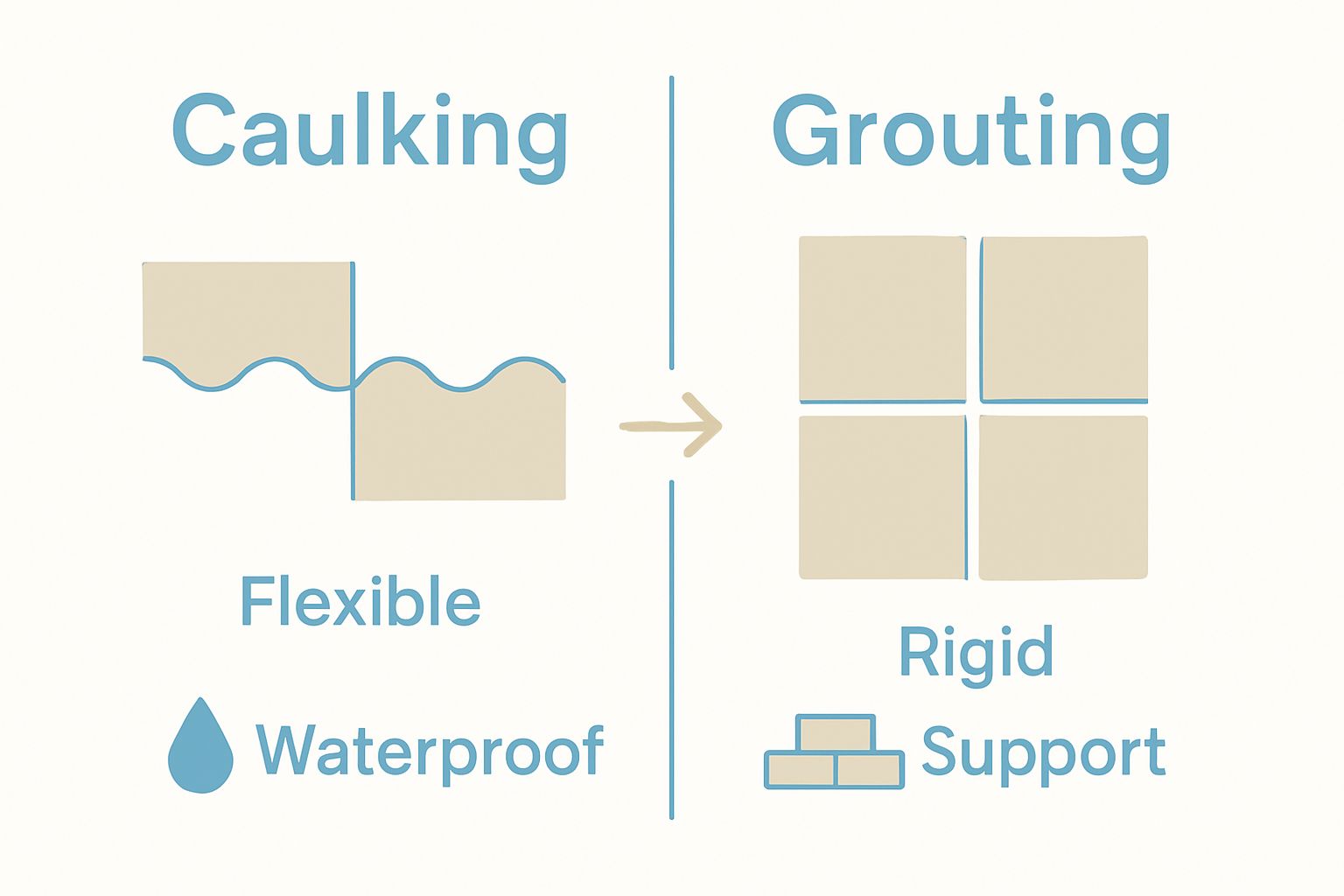
Key compositional differences include:
- Caulk remains flexible and can expand/contract
- Grout hardens into a solid, inflexible material
- Caulk offers superior moisture and air sealing
- Grout provides structural support and load-bearing capabilities
According to National Institute of Building Sciences, understanding material properties is essential for appropriate application in construction and renovation contexts.
Performance and Application Domains
The performance characteristics of caulking and grouting determine their specific use cases. Caulking excels in creating waterproof, airtight seals between different materials, particularly in areas requiring movement accommodation. Grouting specializes in filling tile gaps, creating uniform surfaces, and providing structural integrity to tiled installations.
Distinct application scenarios encompass:
- Caulk: Sealing windows, doors, bathroom fixtures
- Grout: Filling spaces between tiles, creating stable surfaces
- Caulk: Preventing air and moisture infiltration
- Grout: Supporting and stabilizing tile installations
Research from the Tile Council of North America emphasizes that selecting the appropriate material is critical for long-term surface performance.
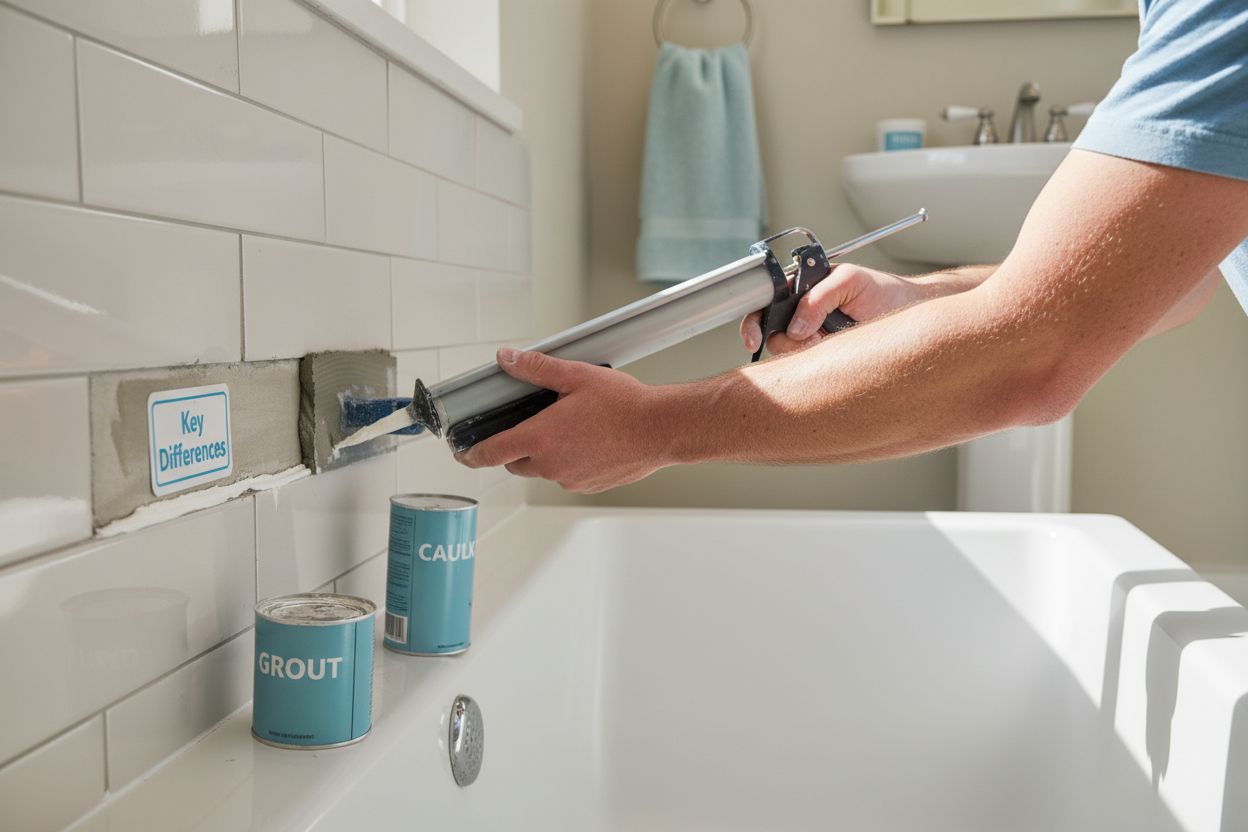 Explore our comprehensive guide on tile installation techniques to understand optimal material selection.
Explore our comprehensive guide on tile installation techniques to understand optimal material selection.
Bring Your Caulking and Grouting Knowledge to Life With the Perfect Tile
After learning how caulking and grouting protect your home from moisture, improve durability, and enhance the appearance of tiled surfaces, you might be wondering how to select materials that truly make the most of these techniques. Selecting the wrong tile can undo the benefits of expert grouting, while overlooking proper caulking can lead to long-term water damage—even with premium products. If you want your project to look seamless, last longer, and stay beautiful, it all starts with the right tile and trusted guidance.
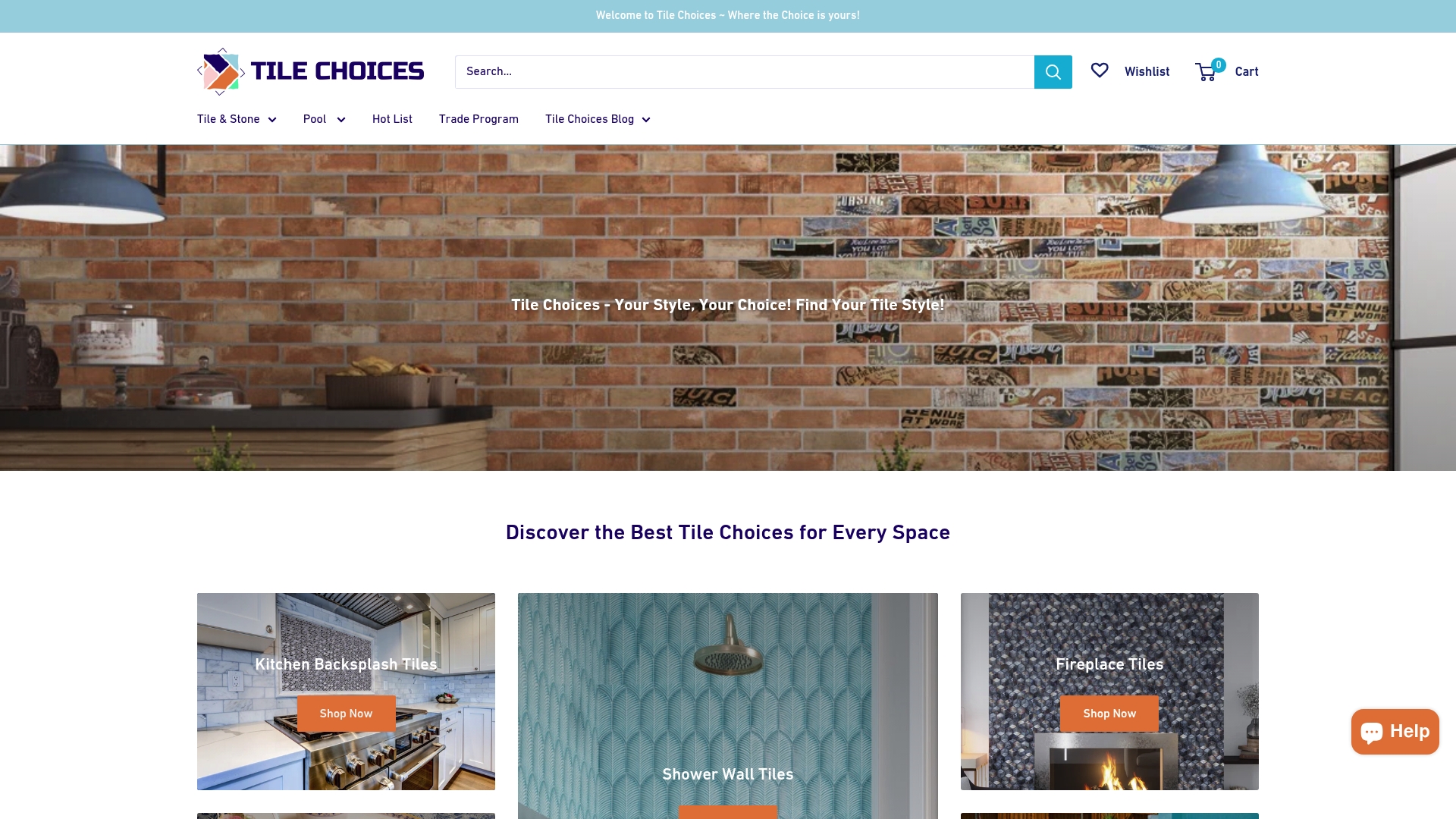
Ready for results you can see and feel? Explore our extensive collections at TileChoices.com where you will find high-quality ceramic, porcelain, and stone tiles designed to work perfectly with professional caulking and grout applications. If you need expert advice for the perfect finish, check out our waterproofing bathroom tiles guide and discover how great tile choices can prevent costly mistakes. Take the first step. Visit TileChoices.com now to transform your vision into a stunning, worry-free space.
Frequently Asked Questions
What is the difference between caulking and grouting?
Caulking is a flexible sealing material used to create airtight and waterproof barriers, while grouting is a rigid cement-based material used to fill gaps between tiles and provide structural stability.
When should I use caulk instead of grout?
Use caulk in areas requiring flexibility and moisture protection, such as around windows, doors, or bath fixtures. Grout is best for filling joints between tiles or stabilizing tiled surfaces.
How do I apply caulking effectively?
To apply caulking effectively, ensure surfaces are clean, remove old sealants, and apply caulk in a continuous bead, smoothing it out for a uniform seal. Optimal conditions for application include a consistent temperature and humidity.
What are the benefits of proper grouting?
Proper grouting enhances the durability and aesthetic quality of tiled surfaces by filling gaps, preventing moisture penetration, and creating a solid, stable installation that extends the surface’s lifespan.

